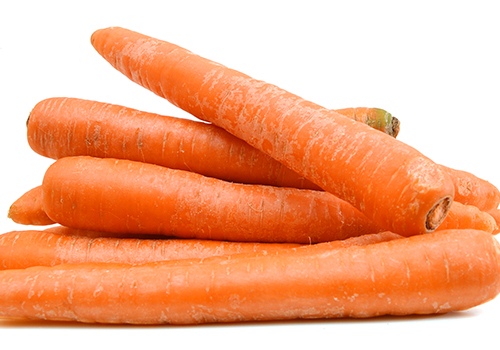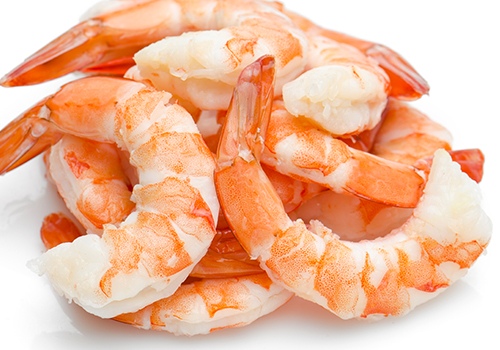There’s a common misconception that to eat healthy means spending more on food. We’re here to bust that myth and prove there are plenty of ways to ensure you’re keeping yourself and your family fighting fit without blowing your budget.
What does healthy eating look like?
The New Zealand Nutrition Foundation says that eating healthily means enjoying a variety foods from all four food groups:
- Grain foods like rice, oats, breads and cereals. Adults need at least six servings a day, while children need 4-6 depending on age and activity.
- Fruits and vegetables of various colours. Two servings of fruit and three servings of vegetables every day is ideal for both children and adults.
- Milk and dairy products like yogurt and cheese. Low-fat options are high in protein and calcium without extra saturated fats. Just 2-3 serves a day is enough.
- Lean meat and alternatives like tofu, eggs or legumes. These are crucial for getting protein, iron and zinc into your diet. A single serving each day is all you need.
Foods high in sugars and fats, such as lollies, soft drinks or fried food, should be avoided. Cooking at home is often the best way to avoid unhealthy foods, as you get the most control over what goes on your plate and how it was cooked.
To eat healthy doesn’t necessarily mean eating superfoods or keeping to restrictive diets. Instead, it’s about variety — making sure you’re getting a balanced mix of nutrients and eating the right amounts.

How to eat healthily on a budget
1. Make a plan and stick to it
A little meal planning at the start of the week can make all the difference when you're eating on a budget. Some of the most unhealthy and expensive foods we eat are fast food takeout, and they tend to be the go-to option when there’s nothing ready to cook.
Fortunately, meal planning is simple. Just grab a pen and paper and write out your breakfasts, lunches and dinners for the week before you buy your groceries. Then, when shopping, you know you’re only buying food that will be eaten and fits within your healthy eating goals. This also helps you cut down on food waste, so you’re doing your bit for the environment as well as your wallet.

Related article: Read our guide to food budgeting.
2. Cook in batches to save time and money
If you're eating on a budget meal prepping, especially batch cooking, is a great way to round out your weekly meal plan while saving money. Seek out recipes that have ingredients you can buy in bulk and easily cook in batches, such as bolognese or soup, and prepare extra portions to freeze or refrigerate for later in the week. You’ll often save money by buying larger portions of the same ingredients, and cooking less often will help you resist turning to fast food throughout the week. If you want to eat meat, buy a whole chicken or larger cuts of meat, cut it up into portions, and batch cook it. If you’re after a bit of inspiration for your meal prepping, take a look at our healthy meal prep ideas.
3. Buy in-season produce
Fruits and veggies are crucial to a healthy eating meal plan. Keeping up with your 5+ A Day is an absolute must for eating well, but a lot of us shy away because produce can be expensive. The secret is to buy in-season fresh produce only. Check out our Fresh Market Update for a breakdown of the different produce for each season.
Of course, this can create barriers for some people. It’s not always as simple as only buying in-season, because our favourite recipes may not be viable throughout the year. Here are a few extra tips to help you adapt to the seasons:
- Substitute! It pays to know what other fruits and vegetables you can use if your recipe calls for out-of-season produce. For example, if kumara are out of season, you might buy carrots or pumpkin instead. They roast, bake or blend into a soup just as well, and have a similar sweet flavour.
- Try out canned produce. Canned food sometimes gets a bad rap, but there’s a lot to love. For example, canned peaches with no added sugar are a fantastic substitute when fresh peaches are out of season.
- Use frozen fruits and vegetables if possible. Frozen fruits and vegetables are snap-frozen to ensure freshness, meaning they’re a great way to get your off-season staples. They also tend to be cheaper than buying fresh even when they’re in season, and are perfect for adding to smoothies, soups, or casseroles.
4. Eat less meat
Did you know we only need one serving of meat a day? Many kiwis base their meals around a choice of protein, but there’s a great argument for embracing veggie meals. Meat often makes up the bulk of a grocery bill, so cutting down on it can help with your spending while also reducing your intake to healthy levels.
- Serve smaller meat portions. A great way to simplify meals is to eat your dinner leftovers for lunch the next day. If you’re eating meat for both lunch and dinner, you only need a half serving for each meal.
- Go meat-free more often. Try adding more vegetarian meals to your weekly dinner plan. For example, lentils like most pulses, are cheaper than buying meat, delicious and nutritious.
- Eat more seafood. Lean fish and seafood are great meat alternatives that can be a great way to eat well for less when buying frozen.
- For instance, salmon is packed with healthy fats and protein, and buying it frozen or in-season can keep costs down while you eat well.
- Buy cheaper cuts of meat. You can save money on meat by buying tougher cuts for your slow cooker. These cuts are affordable and great for batch cooking, saving you time and money.
5. Cut out processed and junk foods
Muesli bars, biscuits and fruit leathers are popular for kids lunches or even as a cheeky midday snack, but are they the best for you? While they may have a low price tag, these products are costing you in calories and sugar. Remove these sugary options from your grocery list and replace them with healthy snacks like nuts or fresh fruit.
For more tips on how to save money and cut your grocery bill in half, read our post 15 ways to save on groceries
recommended recipes
Our favourite healthy foods
Keeping your meal healthy is easier when you have a few great staples to fall back on. Here are some of our favourite foods for healthy eating.
1. Citrus
Citrus like mandarins, oranges and lemons are perfect for getting more Vitamin C in your diet. Mandarin segments, for example, are very easy to incorporate into any meal, such as with a dollop of yogurt as a healthy dessert, tossed through a salad or just by themselves for a snack. These wonderful fruits are also in-season during the winter months, when other favourites might not be.
For a seasonal vitamin C boost, try Afourer mandarins – a late-winter citrus that’s extremely sweet and easy to peel.

2. Kiwifruit
What’s more Kiwi than a Kiwi eating kiwifruit? Besides being a beloved fruit here in Aotearoa, kiwifruit are also loaded with Vitamin C and dietary fibre. They’re also in-season through most of the year, from April to January. Many people peel kiwifruit or scoop out the flesh, but the skin is totally edible and nutrient-dense.

3. Bananas
Bananas are an affordable and versatile way to bring more fruit into your diet. They’re also high in potassium, which is essential for your muscles, breathing and heart. Mash bananas into healthy pancakes or blend them into a smoothie to start the day with a serving of fruit. Or peel and freeze your bananas, then blend them to make a healthy plant-based ice cream alternative.

4. Frozen berries
Berries are delicious and nutritious, but they’re often a bit on the expensive side. That’s why we love buying frozen berries. They are less pricey and can be blended from frozen to make a delicious smoothie, or defrosted and used any way you’d use fresh ones. A great way to save money without compromising on nutrition.
If you’re conscious of your carbohydrate and sugar intake, berries are an absolute must. This is because berries are high in soluble fibre, meaning the net carbohydrate intake is low. So berries are the perfect fruit for low-carb diets.

5. Broccoli
What’s not to love about broccoli? For anybody trying to eat healthier, these green veggies are absolutely packed with nutrients and are available all year round. They’re also very versatile, edible both raw and cooked. The whole broccoli from floret to stem can be eaten, so you’re getting lots of value from a single head. Steam broccoli florets and served alongside cooked lean meat, or throw them into a stir fry. Cut the stem up into small strips and toss them through a salad. You can even blitz a broccoli in a food processor for an extra-healthy rice alternative.

6. Spinach
Spinach is a fantastic leafy green that’s available through the whole year. High in iron, folic acid, calcium and vitamins C, A and K1, spinach is packed with good stuff. Bagged baby spinach makes a wonderful base for a summer salad, and it can be stirred through soups and pasta in winter for extra greens. Or, try mixing it with feta for a delicious vegetarian pastry.
7. Canned tomatoes
Tomatoes are a healthy staple, but in the colder months they’re often very expensive or pale and bland. Canned tomatoes are an easy, less expensive way to serve up healthy meals throughout the year. Use canned tomatoes for any sauce, whether it’s to go on pasta or form a casserole.

8. Carrots
Carrots are at their best in the winter months, but are available all year round. A wonderful, versatile vegetable, carrots can be sliced up and eaten raw, grated and served in a burrito or steamed with a drizzle of honey. Carrots are super affordable and their sweet flavour makes them very kid-friendly.

9. Beans
Don’t overlook a tin of beans. Kidney beans, black beans or even chickpeas are an excellent source of plant-based protein. Add them to any mince dish to stretch it further or even replace the mince. If you’re looking to cut down on meat, beans should be your go-to!

10. Lentils
Dried lentils are a great pulse that you can buy in bulk (saving money) and and used to beef up a variety of dishes add some extra protein. Lentils have a high magnesium content, which may help to promote sleep, and lots of fibre for a healthy digestive system. Add lentils to your favourite stew or try cooking an Indian-style lentil dahl for a meatless Monday.

11. Brown rice
Rice, while delicious, can sometimes just be empty calories. This is because it’s processed in a way that removes the bran and germ of the grain. Whole grains, like brown rice, are far healthier as the bran and germ are left intact. This is important, because these parts of the grain are where most of the nutrition lies. Swap white rice for brown for a straightforward, affordable healthy eating cheat that tastes great and won’t break your food budget.

12. Canned fish
Seafood is a wonderful source of protein, often without the less healthy fats you might find in some other cuts of meat. Canned fish like tuna and salmon are cheap, easy ways to get protein into your diet as well as essential omega-3 fatty acids. Toss canned tuna through pasta or salad, serve it on toast or in a sandwich, or just eat it straight from the can.

13. Prawns
Another great way to put more seafood in your diet is to eat prawns. While fresh prawns can cost a pretty penny, frozen ones are just as tasty and nutritious while being a bit more affordable. You can read all about introducing prawns to your diet in our post "how to cook prawns 6 ways"
14. Eggs
Eggs are among the most nutritious foods on the planet. Packed with protein, healthy fat and antioxidants, there’s a lot to be loved about eggs. Nutrient-dense and versatile, you can include eggs in your breakfast, lunch or dinner very easily. Try out a breakfast burrito or serve your favourite mince with a poached egg for dinner.
Related article: How to poach eggs perfectly.

15. Yogurt
Yogurt is best known as a great source of probiotics. These are live bacteria that are actually good for you. Probiotics help to keep your body in balance, fighting off bad bacteria, helping you digest food and breaking down and absorbing some medication. Including yogurt in your diet doesn’t cost much, and it’s easy to include in any meal. Serve with bircher muesli for breakfast, stir through a curry to counteract the heat or use instead of ice cream for a healthy dessert.

16. Cottage cheese
Cottage cheese is a mild, low-calorie cheese similar to ricotta. Soft and creamy, cottage cheese can be spread on toast, served with a healthy granola, dolloped on top of summer salads or used in place of sour cream. This cheese is popular with athletes because it’s high in protein without any of the bad fats some other cheese may have. It can help with weight loss and muscle gain, while also promoting bone strength with calcium.

Looking for more ways to eat well and pay less? Check out more saving tips from PAK’nSAVE now.
The information provided on this website is not intended as a substitute for professional medical or diet advice. Always seek the advice of your physician or qualified healthcare provider with any questions you may have regarding health and well-being.


